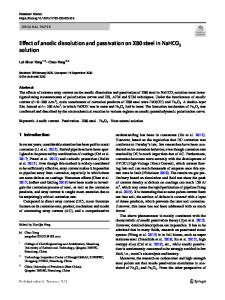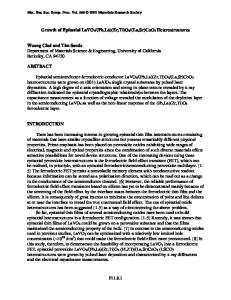Exogenous NaHCO 3 enhances growth and lipid accumulation of the highly NaHCO 3 -tolerant Nannochloris sp. JB17
- PDF / 3,001,201 Bytes
- 13 Pages / 595.276 x 790.866 pts Page_size
- 18 Downloads / 242 Views
Exogenous NaHCO3 enhances growth and lipid accumulation of the highly NaHCO3-tolerant Nannochloris sp. JB17 Min Wang 1,2 & Hua Liu 3 & Kun Qiao 4 & Xiaoxue Ye 1,2 & Tetsuo Takano 5 & Shenkui Liu 3 & Yuanyuan Bu 1,2 Received: 1 February 2020 / Revised and accepted: 30 September 2020 # Springer Nature B.V. 2020
Abstract The extremely saline-alkaline soil in the northeast of China is rich in Na2CO3 and NaHCO3. Previously, we isolated the green alga Nannochloris sp. JB17 (JB17) from this soil and found that it was resistant to high concentrations of NaHCO3. In this study, the biochemical characteristics of JB17 cultured with NaHCO3 were studied by measuring growth and photosynthesis, and biomass, starch, and lipid production. The final cell density and maximum dry weight of JB17 cultured with 300 mM NaHCO3 were 1.528 and 1040.8 mg L−1, respectively, and were higher than those of JB17 cultured with 50 mM NaHCO3 (control). The maximum chlorophyll-a content and oxygen evolution rate under 300 mM NaHCO3 treatment were 26.5 mg g−1and 182 μmol O2 mg−1 Chl h−1, respectively, and were higher than those of the control. The addition of 300 mM NaHCO3 increased the relative electron transfer rate (rETR) and maximum relative electron transfer rate of JB17. The total starch and lipids contents of JB17 significantly increased from 215 to 356 mg g−1 and from 263 to 531 mg g−1, respectively, after the addition of 300 mM NaHCO3. Including NaHCO3 in the culture medium greatly stimulated the growth, biomass accumulation, and lipid productivity of JB17. These results indicate that the accumulation of starch and lipids in JB17 cultured with NaHCO3 might be related to the promotion of photosynthesis. Keywords Chloropyta . Biomass . Fatty acids . Lipid . NaHCO3 . Photosynthesis . Starch
Introduction Because the diffusion rate of carbon dioxide (CO2) is 104 times slower in aqueous environments than in air, many eukaryotic algae have a CO2-concentrating mechanism (CCM)
(Brueggeman et al. 2012). A previous study showed that the growth rate of Chlorella sp. increases when it is supplied with exogenous CO2, whereas high concentrations of CO2 (> 2%) inhibit its growth and biomass accumulation (Chiu et al. 2008). However, CO2 capture using algae requires large
Electronic supplementary material The online version of this article (https://doi.org/10.1007/s10811-020-02293-z) contains supplementary material, which is available to authorized users. * Yuanyuan Bu [email protected] Min Wang [email protected]
Shenkui Liu [email protected] 1
Key Laboratory of Saline-alkali Vegetation Ecology Restoration, (Northeast Forestry University), Ministry of Education, Harbin 150040, China
2
College of Life Science, Northeast Forestry University, Harbin 150040, China
3
State Key Laboratory of Subtropical Silviculture, Zhejiang Agriculture and Forestry University, Hangzhou 311300, China
Xiaoxue Ye [email protected]
4
College of Horticulture and Landscape Architecture, Northeast Agricultural University, Harbin 150030, China
Tetsuo Takano tak
Data Loading...











